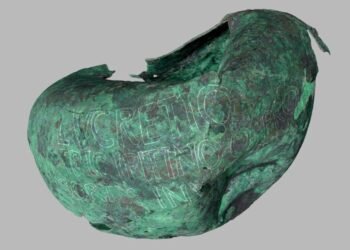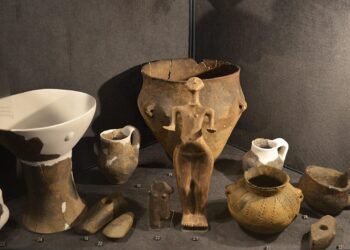A new study, published in the Journal of Archaeological Science, suggests that a series of megathrust earthquakes may have significantly impacted the architectural development and eventual downfall of Teōtīhuacān, the ancient Mesoamerican city located in present-day Mexico.

Teōtīhuacān, known as the “birthplace of the gods” by the Aztecs, flourished between 150 BCE and 650 CE, during which it grew into a bustling metropolis characterized by monumental structures such as the Pyramid of the Sun, the Pyramid of the Moon, and the Temple of the Feathered Serpent. The city’s peak population, estimated between 100,000 and 200,000 inhabitants, occurred during the Xolalpan and Metepec phases.
The recent study highlights the role of seismic events in shaping the destiny of Teōtīhuacān. Through a comprehensive analysis of archaeological evidence, researchers have identified Earthquake Archaeological Effects (EAEs) in several key structures within the city, including cracks, displacement of masonry blocks, and wall collapses. These EAEs, which are indicative of strong ground shaking, suggest that at least five destructive earthquakes struck Teōtīhuacān between 100 CE and 550 CE, during periods such as the Tzacualli-Miccaotli and Xolalpan-Metepec phases.
The spatial pattern of the EAEs and the orientation of the cracks suggest that repetitive megathrust earthquakes originating from the Middle American Trench may have been responsible for the seismic activity that impacted Teōtīhuacān.

Furthermore, the study suggests that these earthquakes likely influenced the evolution of Teōtīhuacān’s architectural style, leading to the expansion and reconstruction of key religious and political buildings. The Pyramids of the Sun and Moon, along with the Temple of the Feathered Serpent, underwent significant modifications, possibly in response to seismic damage.
The findings also coincide with historical accounts of a population decline, fires, and building collapses starting around 550 CE, marking the beginning of the city’s decline and eventual abandonment. This period saw inhabitants migrating to other regions, such as Xochicalco, and the rise of the Toltec culture in Tula.
The abrupt collapse of Teōtīhuacān could be attributed to a combination of factors, including earthquakes, which may have intensified internal conflicts and civil unrest.”
The research also highlights the need for further investigation into the paleoseismic records of the region, particularly the analysis of liquefaction and sediment deformation in Lake Texcoco, to better understand the seismic history of the central basin of Mexico.























